Syn.: Daubentonia punicea (Cav.) DC., Emerus puniceus (Cav.) Kuntze, Piscidia ovalifolia Larranaga, Piscidia ovalis Larranaga, Piscidia punicea Cav., Sesbania tripetii F. T. Hubb.
Family: Fabaceae Lindl.

Distribution: Native to South America in southern Brazil (Mata Atlântica, Pampa, Pantanal), northern Argentina, Paraguay and Uruguay. Naturalized elsewhere in South America, South Africa and North America, in US in coastal states from Virginia to Texas and California.
Ecology: It prefers sites close to water for dispersal of seeds, therefore, it is found in wetlands, swamps and along waterways and standing water, where it can form dense stands, edges of woods. Flowering period is spring and early summer.
Description: Deciduous shrub or small tree to 5 m tall. Bark is grey to reddish brown, porous, covered with lenticels. Leaves alternate, compound, 12–18 cm long, 7–16 pairs of leaflets, oppositely arranged, elliptical, 2.5 cm long. Flowers 2–3 cm in size, typical Fabaceae shape with a large standard, strap-like wings and deep keel of about equal length of wings, orange red colour, hanging in raceme-like clusters. Fruit is a legume, 7–10 cm long, brown, with longitudinal wings. 3–9 seeds per pod make rattling sound when shaken (hence one of the common names). Some seed pods persist through winter.
Use: Sesbania is used as an ornamental plant despite its invasiveness. It contains poisonous saponins in all its parts, particularly in the seeds.
Note: Out of its original range of distribution it is considered invasive, especially in Florida, California and South Africa.
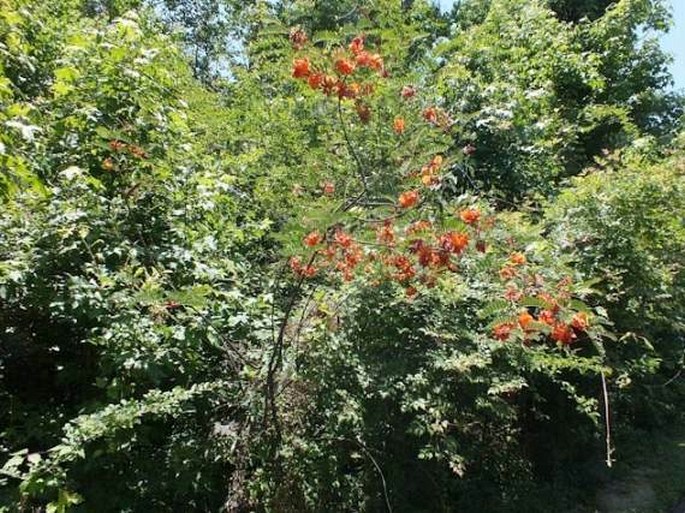
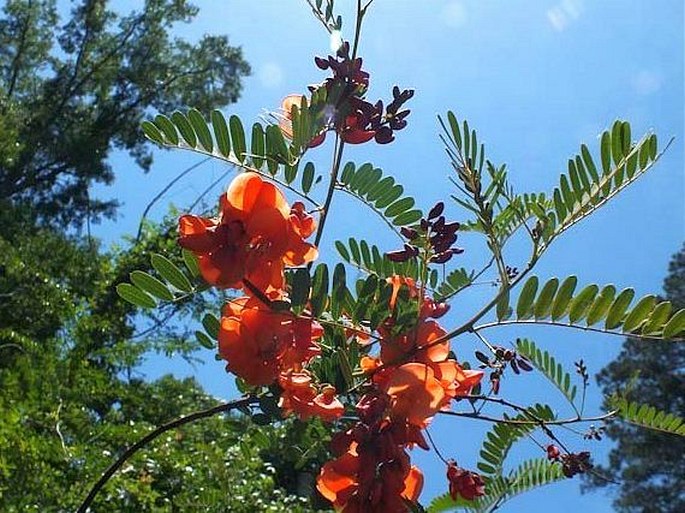
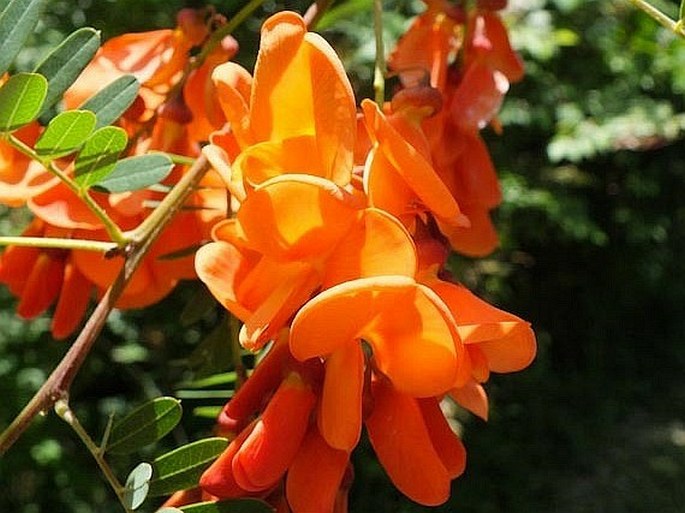
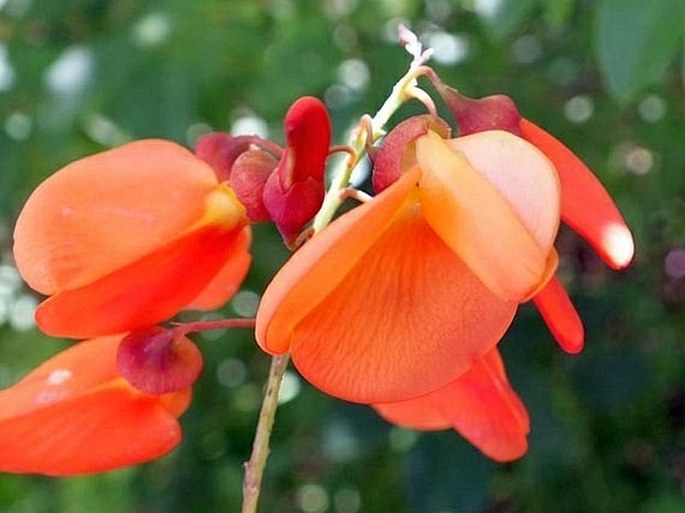
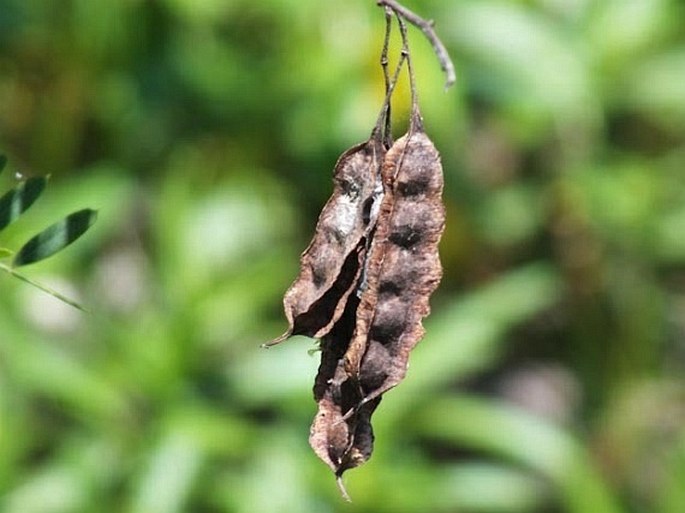
These images were taken in USA, Louisiana, Tickfaw State Park, near Springfield (May 2014).


